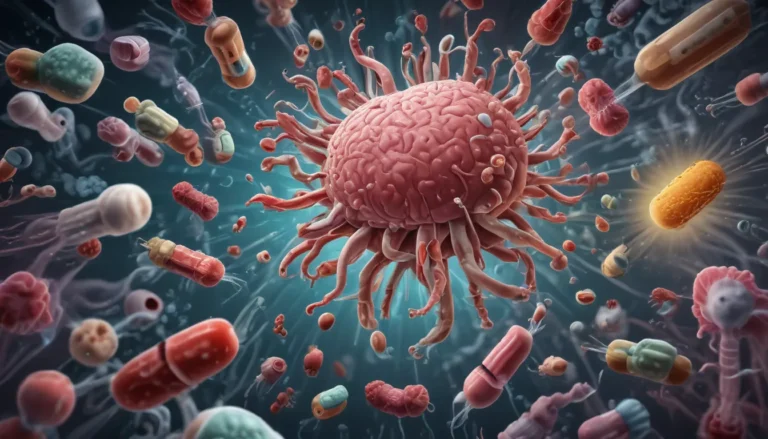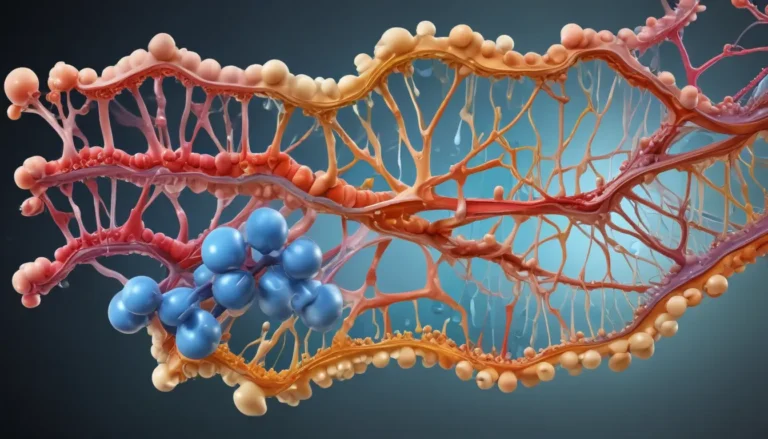A Note About Images: The images used in our articles are for illustration purposes only and may not exactly match the content. They are meant to engage readers, but the text should be relied upon for accurate information.
In the vast realm of biology, differentiation potency stands as a captivating concept that shapes the development and functioning of living organisms. This innate ability of cells to transform and specialize into various cell types is a fundamental process that underpins embryonic development, tissue regeneration, and disease progression. As we unravel the intricate mechanisms governing cellular potency, we unearth new opportunities for medical breakthroughs and therapeutic interventions. Join us on a journey as we explore 14 intriguing facts about differentiation potency, from the diverse types of cellular potency to its regulation and significance in biology and medicine.
Understanding Differentiation Potency
At the heart of differentiation potency lies the potential of a cell to assume a specific function in the body by transforming into specialized cell types. This ability serves as a cornerstone in various biological processes, offering insights into the intricate orchestration of tissue development and regeneration.
Exploring Different Types of Differentiation Potency
Totipotent, Pluripotent, and Multipotent Cells
-
Totipotent Cells: These remarkable cells possess the unique capability to develop into all cell types in the body, including both embryonic and extraembryonic tissues.
-
Pluripotent Cells: Known for their versatility, pluripotent cells can give rise to all cell types in the body except for extraembryonic tissues.
-
Multipotent Cells: With a more limited developmental range, these cells can differentiate into specific cell types within a particular lineage, contributing to tissue repair and regeneration.
Unveiling the Power of Stem Cells
Embryonic Stem Cells and Induced Pluripotent Stem Cells (iPSCs)
-
Embryonic Stem Cells: Celebrated for their pluripotent capabilities, embryonic stem cells have become a focal point in scientific research, offering valuable insights into cellular potency.
-
Induced Pluripotent Stem Cells (iPSCs): Through the reprogramming of adult somatic cells, scientists can induce pluripotency, generating iPSCs with the potential to differentiate into diverse cell types.
Regulation of Differentiation Potency
Key Factors and Signaling Pathways
-
Yamanaka Factors: Factors like Oct4, Sox2, Klf4, and c-Myc, collectively known as the Yamanaka factors, play a vital role in maintaining stem cell potency.
-
Complex Signaling Pathways: Signaling molecules such as Notch, Wnt, and BMP intricately regulate the fate and potency of cells, shaping their developmental trajectory.
Implications in Regenerative Medicine and Cancer Research
Cancer Stem Cells and Therapeutic Applications
-
Cancer Stem Cells: Possessing self-renewal and differentiation abilities, cancer stem cells contribute to tumor growth and therapy resistance, spotlighting their significance in cancer progression.
-
Regenerative Medicine: The study of differentiation potency holds profound implications for innovative treatments across a spectrum of diseases and injuries, harnessing the power of cell specialization for therapeutic interventions.
Shaping the Future through Differentiation Potency
Epigenetic Modifications and External Influences
-
Epigenetic Regulation: Epigenetic changes such as DNA methylation and histone modifications play a pivotal role in determining cell fate and potency, offering avenues for manipulating differentiation potential.
-
Environmental Factors: External cues like growth factors, hormones, and physical forces can influence the differentiation potency of cells, highlighting the dynamic interplay between intrinsic and extrinsic factors.
Unraveling the Mysteries of Differentiation Potency
With each new discovery and advancement in stem cell research, we inch closer to unlocking the secrets of differentiation potency and its profound impact on biology and medicine. As we venture into the future, the possibilities for harnessing cellular potency in groundbreaking ways seem limitless, paving the way for transformative innovations and therapeutic advancements.
Embracing the Journey of Discovery
As we delve into the multifaceted world of differentiation potency, we invite you to embark on a quest for knowledge and exploration. The vibrant tapestry of cellular specialization and embryonic development unfolds before us, offering a glimpse into the marvels of life’s intricacies. Let us celebrate the wonders of differentiation potency and the endless opportunities it presents for understanding the essence of life itself.
FAQs
-
What is differentiation potency?
Differentiation potency refers to the ability of stem cells to develop into specialized cell types in the body. -
What are the different types of differentiation potency?
The main types include totipotent, pluripotent, and multipotent cells, each offering unique developmental capabilities. -
How is differentiation potency regulated?
Through intricate genetic and epigenetic mechanisms, the regulation of differentiation potency determines the fate and specialization of stem cells. -
What is the significance of studying differentiation potency?
Studying differentiation potency provides valuable insights into tissue development, regeneration, and disease pathology, offering a foundation for therapeutic interventions. -
Can differentiation potency be manipulated?
Research suggests that altering genetic or environmental conditions can influence differentiation potency, paving the way for potential advancements in cellular reprogramming and regenerative medicine.
The journey into the world of differentiation potency is a captivating odyssey that continuously unfolds with new revelations and scientific advancements. Join us as we celebrate the intricacies of cellular specialization and the transformative potential it holds for shaping the future of biology and medicine. Together, we embark on a quest for knowledge and discovery, unraveling the mysteries of life’s most profound processes with each fascinating fact we unveil.






